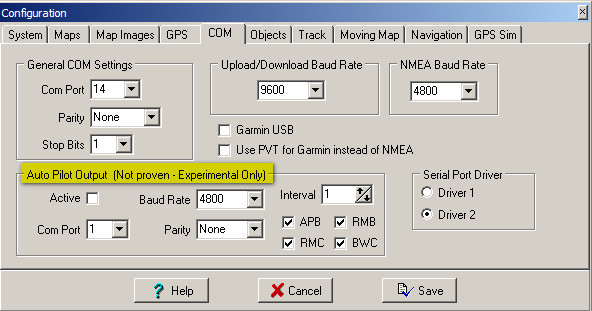CS23 / ELA is likely to allow builders to put non-TSO avionics in certfied aircraft.
There is a difference betwen being produced under TSO authorisation and meeting the TSO specifications. If Fligh Design can document that the instrument meets the specifications (EASA or whatever), there is no need for the instrument to be produced under some authorization. These are performance and design specifications, not manufacturing specifications.
CS23 / ELA is likely to allow builders to put non-TSO avionics in certfied aircraft.
document that the instrument meets the specifications (EASA or whatever)
Does this mean that in future, in my ELA1 TB10, I might be able to install a D3X? Or would this only apply to new builds.
Does this mean that in future, in my ELA1 TB10, I might be able to install a D3X? Or would this only apply to new builds
As a TB 10 was not certified as a CS23 ELA1 including a D3X it seems doubtful, but who knows?!!
I have just spotted this

in an old piston twin. The interesting thing is that this aircraft, currently N-reg, has just had an Export CofA done by an FAA DAR, so the DAR was happy with it. The aircraft is shortly going onto the G-reg, too, though I have no idea of any forthcoming issues there.
Is this certified on the basis that the holder of the GPS is (?) a TSOd part even though the GPS itself obviously isn’t? I have heard of that route before but surely the certification authority will know that as soon as this goes in, an uncertified part will be fitted. But then the said part is removable so maybe that’s the key.
As long as you don’t wire it to the aircraft’s electrical system, you can install any holder or handheld GPS, i think.
It is not a problem to have such an installation under EASA. It will be limited to VFR Day use only.
It wasn’t a problem to receive approval for this under a minor change approval. Nowadays, this would just fall under CS-STAN. For moving map, you can use a non TSO-ed unit, if you accept some limitations, so no problem at all.
The D3X should read G3X? Would be a completely different product, and would not qualify for installation in a CS-23 aircraft. It is a completly different league.
Since that G296/496 holder is obviously connected to the aircraft electrical system, what is the procedure there? A separate CB, or alternatively using an existing CB and verifying the appropriate rating?
It will be limited to VFR Day use only.
What does that actually mean? There is no regulation specifying what equipment is to be used (only carriage is specified). Obviously such a GPS will not confer any BRNAV etc privileges 
I am also curious that such an installation is OK for the initial transfer to a G-reg. It would mean that all kinds of stuff can be accepted which in the past would definitely have to be removed.
Peter wrote:
Since that G296/496 holder is obviously connected to the aircraft electrical system, what is the procedure there? A separate CB, or alternatively using an existing CB and verifying the appropriate rating?
Yes. When I installed my power flarm that is exactly what they did. And there are dozens of such Air Gizmo docks installed, even up to 795´s
Peter wrote:
What does that actually mean?
It means that this device can be used VFR daylight only, formally.
If an airplane like that is certified IFR, this device is not considered. YOu still need all what is required for IFR apart from this.
What people actually do in flight is another story. I recall one twin which had an old KLN90 for B-RNAV but used an Moving Terrain all the time as primary. The problem with that is that you can´t connect these devices to the AP or to other systems.
It means that this device can be used VFR daylight only, formally.
Sorry to bang on about this  but where is the reference?
but where is the reference?
Such a reference would amount to a regulation specifying what equipment is used during flight and how. I have never heard of such a reg (private flight, USA or Europe).
The problem with that is that you can´t connect these devices to the AP or to other systems.
The really funny thing is this (in Oziexplorer) 

It sounds like there are autopilots in the homebuilt market which take RS232 steering data. The certified ones take only ARINC429 serial (if any serial at all).
It would also be very easy to convert the digital data into analog steering signals. The roll steering converters on the certified market (at silly prices) seem to do very very little. They just take roll angle commands (ARINC429 – can be easily bit-banged in software) and convert them into a fake heading bug voltage. They don’t do any interpolation / smoothing, which is why they need frequent packets e.g. 5/sec.